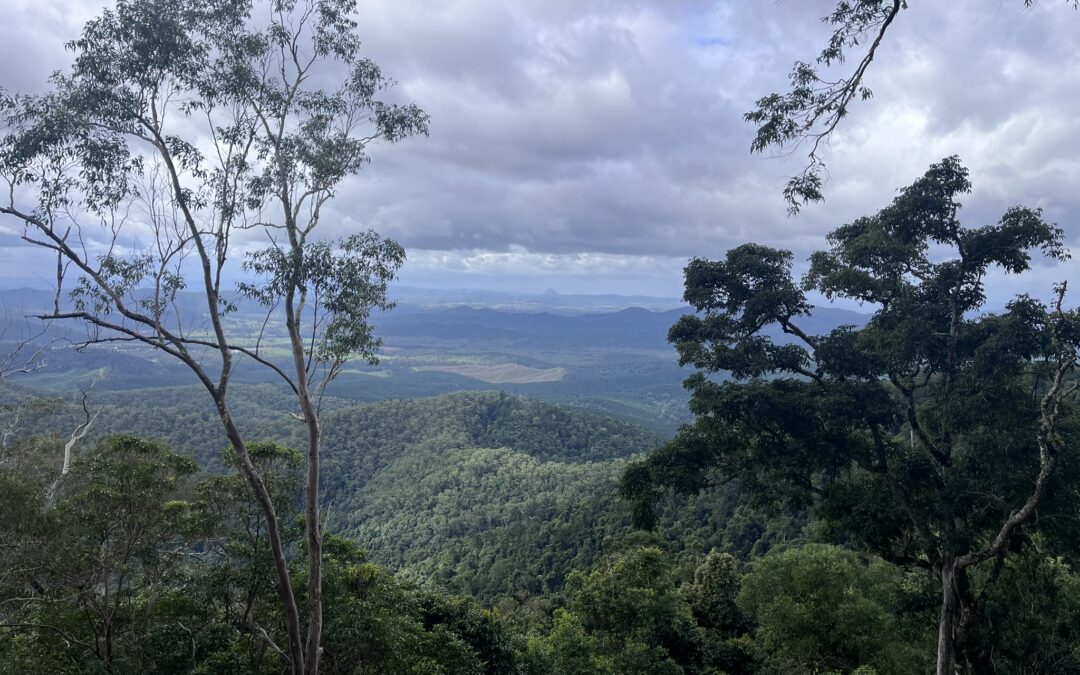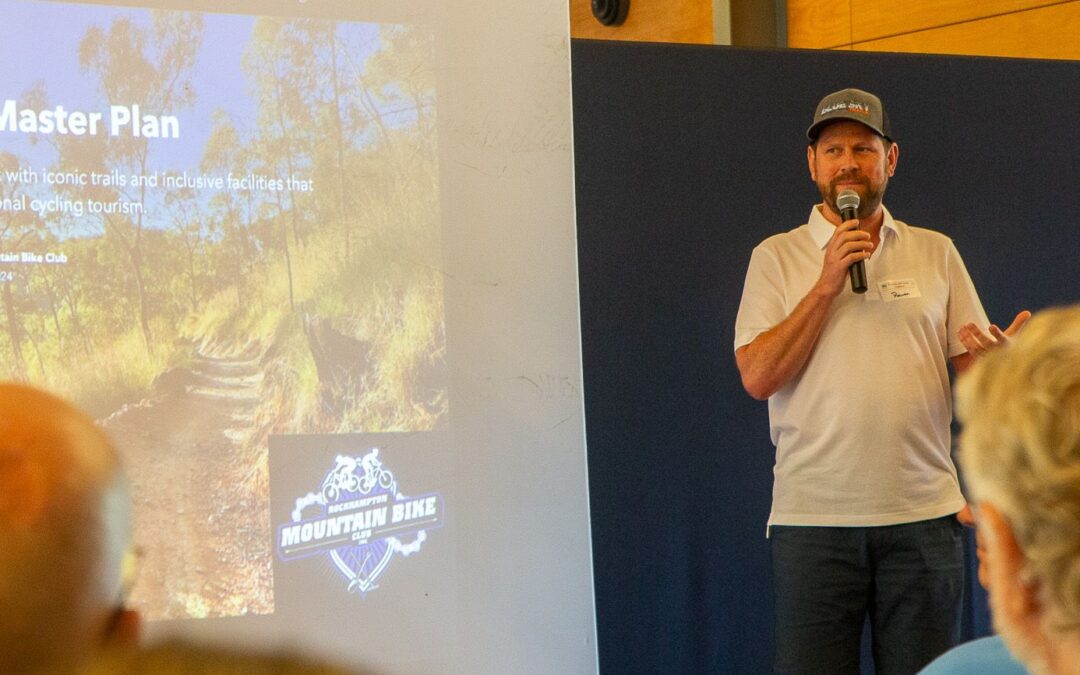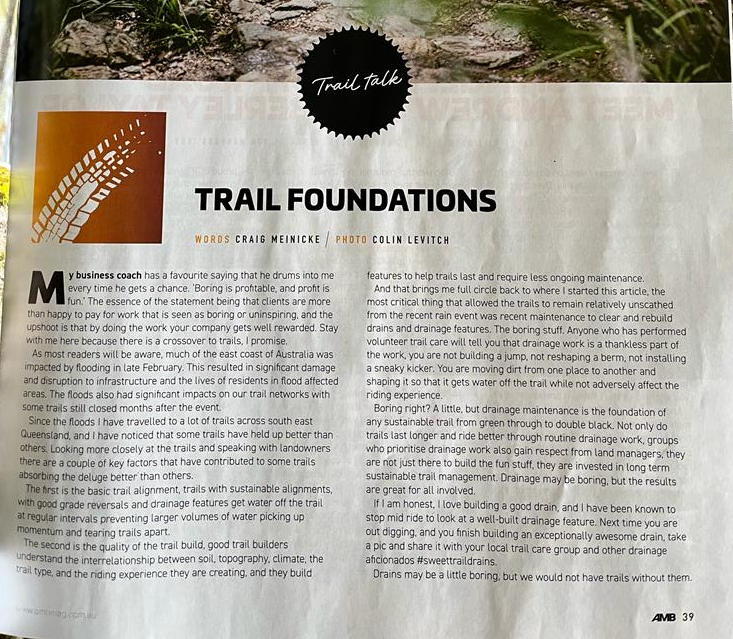Not sure if it is just me, but there seems to be a lot of chat at present about funding the maintenance of our trails in the long term. I am involved in the delivery of several large mountain bike networks, and it is pleasing to see that these projects are prioritising funding that is being used to develop frameworks to generate income to fund ongoing maintenance and management activities.
For existing networks securing funding can be problematic, however some trail managers are identifying innovative ways to create revenue streams, whether that be through events, shuttle services, membership fees, or through corporate sponsorship.
The tried-and-true method used by most clubs to secure funding is through grants. There are literally hundreds of grants available from local, state, and federal governments and through some generous private sector angels. One drawback is that a lot of these grants only fund capital works, however if you are creative, you can often get some upgrades done as well.
At my club here in North Brisbane, we have recently been successful in securing grants to build some new trail and to rebuild some existing trail which was damaged by floods. As a result of these wins, Mike asked me to pen an article to highlight some key tips to securing grants.
First step is to have a big picture vision for what your network will look like, and the benefits it will provide to the community. When we started applying for grants, it would all be last minute, we would get a couple of maps together, scratch out some trail alignments, string some words together, and find a couple of quotes to go with the submission. Suffice to say we had zero success. After a couple of rounds we changed strategy, we developed a master plan of what we wanted the trail network to be. We produced this within the club and took it to the level of detail we needed for the grants we were applying for.
Second step was to match the grant with the outcomes we were looking to achieve. We targeted a gambling fund grant for some new trails and a disaster recovery grant for the flood rebuild.
Third step was to match the scope to the funding, we did this by looking at what our contractor, consulting, traditional owner, and materials costs would be and then added in scope for volunteer building time. This gave us the total distance and type of trail we could build for the grant.
The fourth step was really important, we needed to define what trails we were going to build or repair and why it was important to build or repair these trails as part of the grant. This is where the master plan came in very handy, we used the master plan together with our knowledge of the current shortcomings of the network to identify what trails would give us the best bang for our buck when it came to the grant. We then validated this with the land manager and agreed the grant scope of work and the project success objectives.
The fifth step involved developing a polished submission and maps that demonstrated that we were professional and would deliver the project on time and on budget. This is as simple as a well written submission, professionally developed mapping, and good quality contractor quotes.
Since implementing this process, I am happy to say that we are two from two for grants applied for.
One additional step we added to this process after we learnt we were successful, and before we delivered the project, was to install trail counters at specific locations throughout the network to measure rider behaviours before the upgrade. Once the project was complete, we moved the counters to locations that allowed us to validate the project success objectives. Happy to say that the data validated the four project success objectives we identified for the new trail project and we will do the same for the trail rebuild. Being able to demonstrate the outcome of the project using data is a critical element in proving the value of the investment and that you chose the right trails to build or upgrade.
While grants aren’t the silver bullet to all of our trail building and maintenance issues, they are a valuable source of funding to keep things moving. Not only do grants bring in cash to clubs, they generate excitement and an energy that new stuff is being built and trails are being upgraded.
Putting structure into your grant process will pay dividends with your win rate and will cut down on the time it takes to develop and submit grant information, giving us all more time to get out and ride.
Happy trails.
Want to read more?
Craig Meincke is a regular contributor to Australian Mountain Bike Magazine. You can read Craig’s article and much more in this months issue. https://www.ambmag.com.au/



